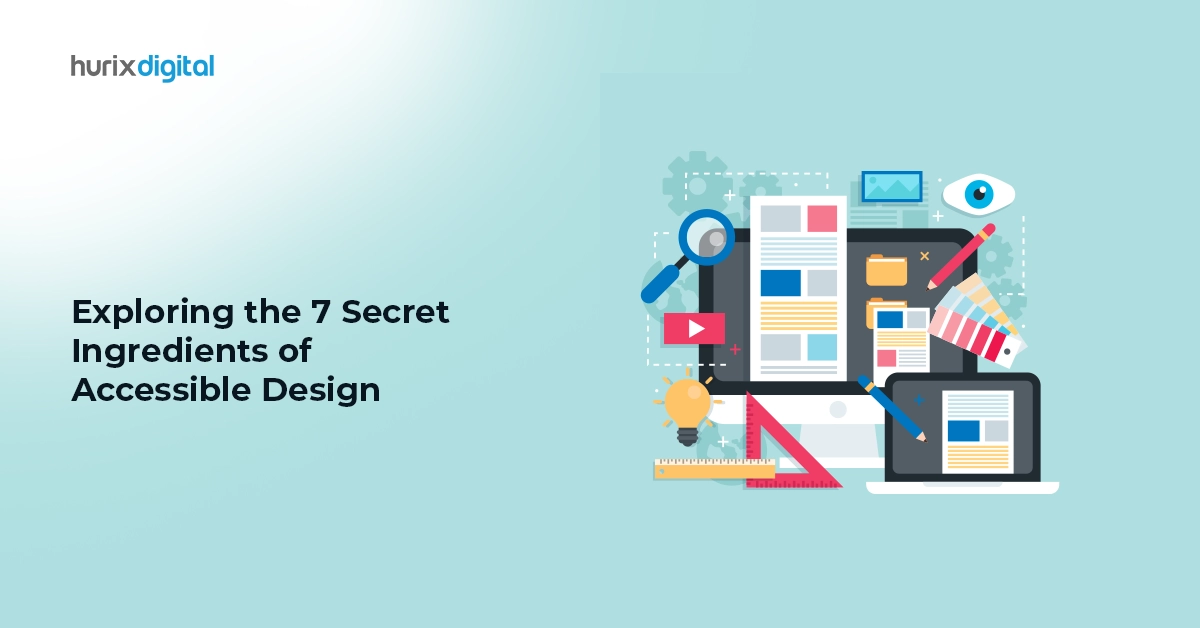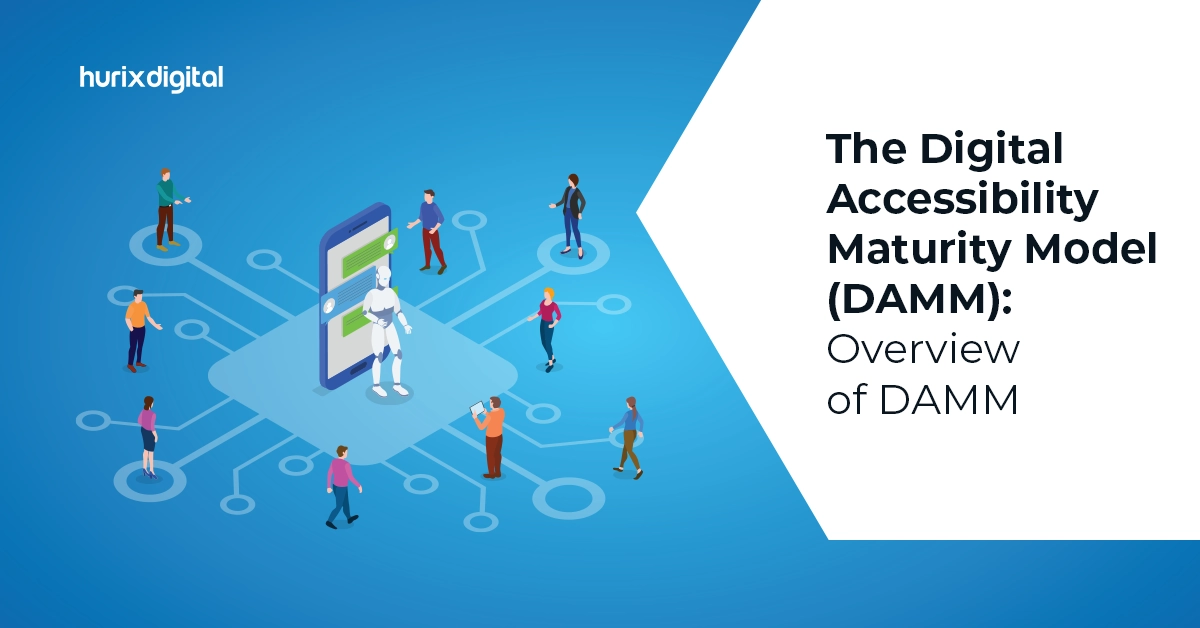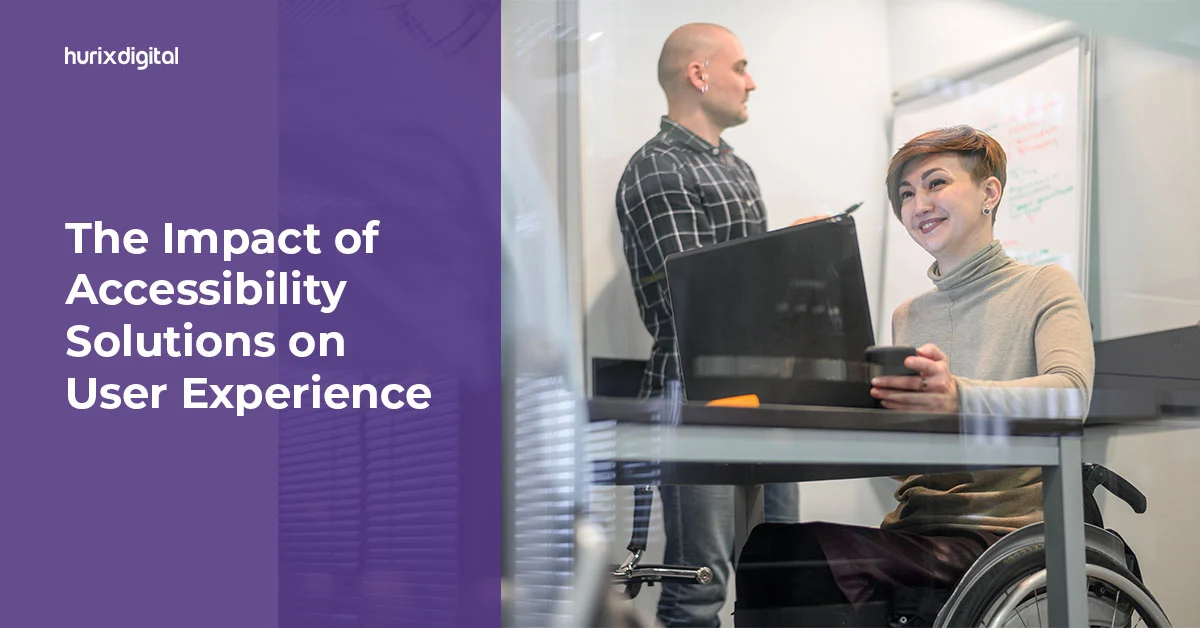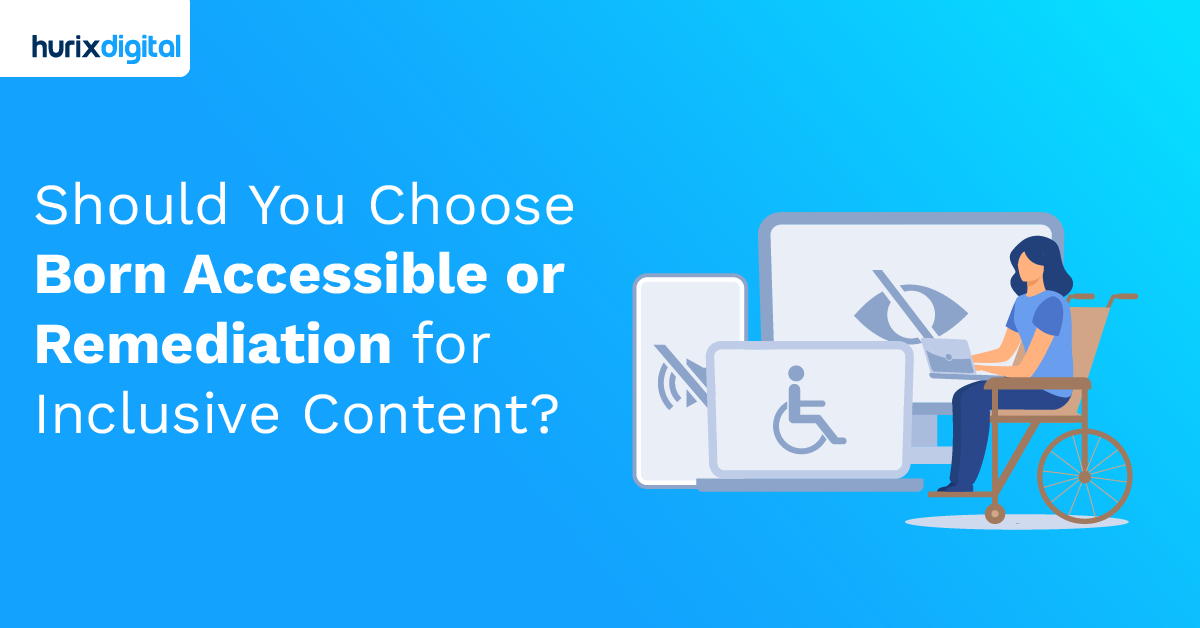
Exploring the 7 Secret Ingredients of Accessible Design
Summarize with:
In the digital world, the importance of accessible design in UX has become increasingly clear. With various platforms and services going digital, designers’ and developers’ inclusive approach to people with disabilities is becoming a critical concern.
The significance of accessible design for fostering equal access to information and services is reinforced by current statistical data.
According to WHO estimates, about 1 billion people live with disabilities globally, which constitutes about 16% of the whole world’s population. Additionally, with the aging population and the increasing prevalence of chronic health conditions, the demand for accessible digital solutions is poised to escalate further.
The CDC indicates that almost 61 million individuals, representing 25.7% of all adults, have different impairments or disabilities in America alone. Given these figures, it becomes even more essential to consider accessibility when designing UXs.
Table of Contents:
- 7 Secret Ingredients That Make Accessible Design a Masterpiece in UX
- The Profound Importance of Accessible Design in UX
- Final Thoughts
7 Secret Ingredients That Make Accessible Design a Masterpiece in UX
Accessible design addresses the needs of people with disabilities and improves the overall user experience. It includes different principles and practices aimed at removing hindrances from interactions and ensuring equal access to information and functions.
This means that designers have to consider diverse user needs, such as those who are visually, aurally, manually, or cognitively impaired. Encouraging accessibility paves the way for usability, which can foster user satisfaction and ultimately widen their audience.
Here are several hidden elements that contribute to accessibility in UX:
1. Empathy
Empathy is foundational for accessible design. It goes beyond understanding and sharing other people’s emotions. This characteristic requires designers to use unique approaches to consider the various needs, desires, and hindrances experienced by individuals with impairments.
In designing, too, they should try putting themselves in the shoes of people with differing abilities. This will enable them to draw informed conclusions about their designs. The cornerstone of this feeling is creating non-discriminatory answers.
2. Universal Design
Building products and environments that facilitate use by all individuals to the maximum extent possible without the need for adaptation is supported by Universal Design Principles. Similarly, the starting point of universal design is in its flexibility, simplicity, and intuitiveness. In place of treating accessibility as an afterthought, designers integrate it into designs so that it forms an integral part of them.
3. Clear and Consistent Communication
Accessibility usually depends on effective communication. To facilitate understanding by all users, designers increase comprehension and usability by prioritizing clarity, simplicity, and consistency in interface elements.
This involves using short language texts, meaningful icons or logos, and intuitive navigation structures. Moreover, visual hierarchy, color contrast, and typography are used by designers to assist in information processing and readability improvement for people with visual impairments.
4. Flexible Interaction Modalities
Accessible design acknowledges diverse user abilities through flexible interaction modalities. For instance, this includes multiple pathways for navigation input and interaction that cater to persons with diverse motor skill capability levels or who require assistive technology devices for such a purpose.
From keyboard shortcuts and voice commands to gesture-based controls and switch access, designers empower users to engage with digital interfaces in ways that suit their preferences and abilities.
5. Visual and Auditory Inclusiveness
Visual and audio elements substantially impact the user experience. For inaccessible design, designers focus on creating visuals that communicate data effectively, regardless of whether users are visually impaired.
This approach incorporates alternative texts for pictures, video captions, and enough color contrast for legibility. In audio design as well, designers make transcripts available as well as subtitles on audio files to facilitate access for deaf people.
6. Seamless Integration of Assistive Technologies
Assistive technologies act as essential tools for disabled people, enabling them to access digital content and offer services.
Developers work hand in hand with designers to integrate assistive technology, such as screen readers like JAWS (Job Access With Speech), ZoomText magnifiers, voice recognition software such as Dragon NaturallySpeaking, and other input devices that substitute mouse or keyboard commands for use by persons with disabilities.
Designers help improve compatibility and interoperability among various ATs, thereby enabling users to maximize their potential through these technologies, thus enhancing personal self-governance.
7. Continuous Testing and Iteration
Accessibility is not a one-time endeavor but a continuous commitment to improvement. Through continuous testing and iteration, designers gather feedback from users with disabilities, identify pain points and usability barriers, and refine their designs accordingly. User testing sessions, accessibility audits, and feedback mechanisms serve as invaluable resources for driving iterative enhancements and optimizing the user experience for all.
Also Read: How to Use AI-Powered Alt Text to Make Your Content More Accessible and Inclusive?
The Profound Importance of Accessible Design in UX
Here’s why accessibility best practices are important in UX:
1. Promoting Social Inclusion and Equity
Accessibility is more than a principle of design; rather, it is a fundamental human right. When UX design makes accessibility the highest priority, organizations can enhance social inclusion and equity as well as empower individuals with disabilities to be full participants in the digital society.
Regardless of physical or cognitive abilities, available design ensures that everyone has equal access to information, services, and opportunities.
2. Driving Innovation and Creativity
Accessibility spurs innovation in UX design by challenging designers to think creatively about solving complex problems. Many times, while trying to work within the limitations imposed by accessibility requirements, designers have discovered new insights, techniques, or solutions that improve the user experience for all users.
Accessible design prompts designers to experiment with novel techniques to transcend the boundaries of creativity and pioneer new front-end development paradigms in UX design. In this way, accessibility becomes a catalyst for innovation, driving positive change and pushing the industry ahead.
3. Empowering Users with Disabilities
For people with challenges, accessible design is not only an added advantage but also a lifesaver. Designers can empower the physically challenged using accessibility features such as keyboard navigation, screen readers, and alternative text, which allow users to navigate and interact independently with digital products.
Accessible design enables someone living with a disability to be able to access information, communicate with others, or perform everyday activities of life independently and with dignity. This empowerment changes people’s lives for the better and makes them more self-reliant.
Also Read: How to Create an Accessible Brand in 2024 and Beyond?
Final Thoughts
Accessible design is not merely a checkbox to be ticked off but a journey of discovery, empathy, and innovation. By embracing the secret ingredients above, designers can unlock the full potential of UX design, creating masterpieces that transcend barriers and empower users of all abilities.
Whether you’re seeking to revolutionize your eLearning solutions, enhance your digital publishing capabilities, or optimize your content for accessibility and inclusivity, Hurix Digital is your trusted partner every step of the way.
With a commitment to excellence, innovation, and customer satisfaction, Hurix Digital empowers organizations to explore their full potential in the digital landscape. With our tailored solutions and industry-leading expertise, we help our clients deliver impactful experiences that resonate with audiences worldwide.
To learn more about our innovative automation solutions, contact us now!
Summarize with:

Vice President – Content Transformation at HurixDigital, based in Chennai. With nearly 20 years in digital content, he leads large-scale transformation and accessibility initiatives. A frequent presenter (e.g., London Book Fair 2025), Gokulnath drives AI-powered publishing solutions and inclusive content strategies for global clients
 We’re live! Explore the all-new
We’re live! Explore the all-new 





